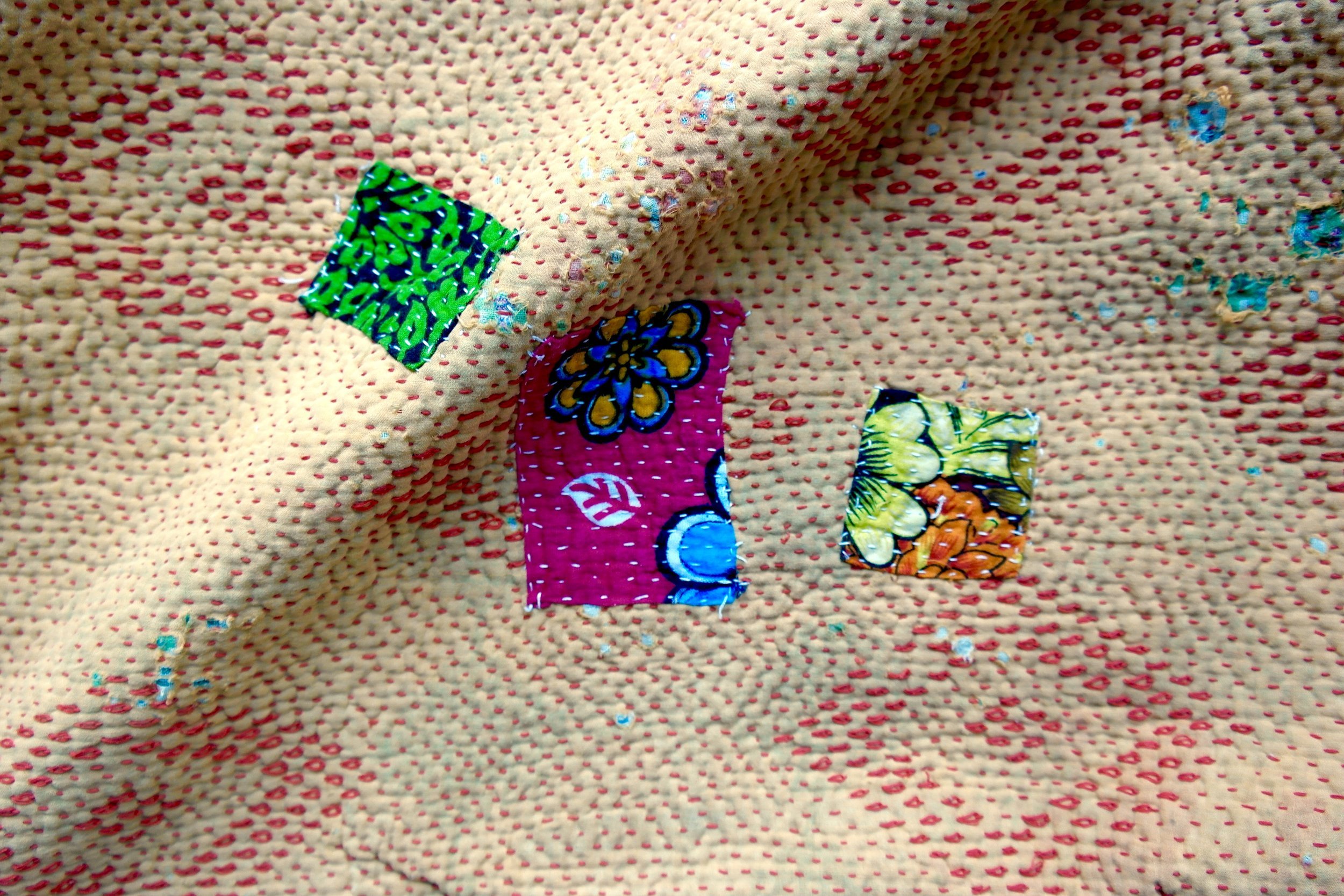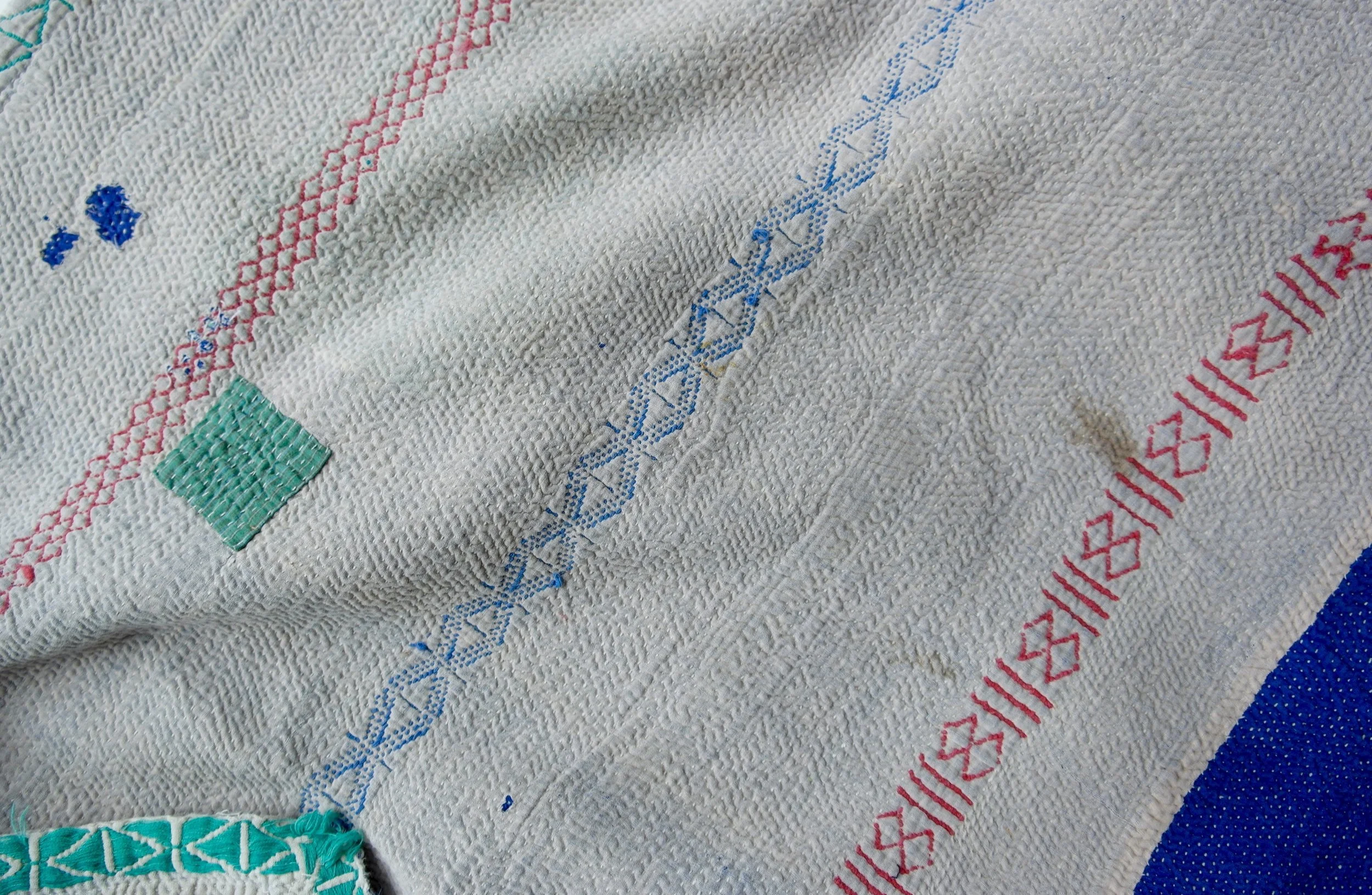All Kantha! Chapter 3
5 Things to Consider When You Buy a Vintage Kantha Quilt Online
Have you have ever purchased a Kantha quilt online? In that case you probably know that it can be quite tricky to get a picture of a Kantha throw (or any textile for that matter) from online images and descriptions only. You cannot touch the fabric, so you don't get a feel for its weight or texture. I have bought a lot of Kantha quilts, many of them online, so here are five points worth considering when you buy a Kantha blanket from an online seller. This goes without saying that first and foremost, you should pick the quilt with the most beautiful colours and design!
1) Is this really a recycled / vintage product?
As Kantha stitching has become pretty commercialised with the growing popularity of these lovely textiles, you will find loads of newly stitched Kantha quilts for sale online, often presented as vintage items, and sometimes even made of non-recycled materials. So beware if you look for recycled and / or used quilts! Keep in mind that Kantha quilts are supposed to be recycled products, made from fabric left-overs, old saris and the like. For this reason, Kantha throws often have what we would commonly consider "flaws" - staining, mended tears and patches. This is part of a Kantha quilt's unique charm. Actually, the more signs of use, the more "vintage" a quilt or its components are!
New Kantha quilt made from recycled textiles
A good indication for a used quilt is the disintegration of the quilt’s uppermost sari layer. This happens quite a bit with Kantha blankets, as the fabric layers used for making them are often very thin and delicate. When you use, launder and tumble dry your Kantha quilt repeatedly, you might notice that the upper fabric layer starts to peel, with the next layer showing underneath (I have been told, though, that sometimes, this effect is produced artificially to make buyers believe that they are purchasing a vintage product). This can actually look quite cool - below is a picture of a beautiful quilt where the uppermost, pink layer has peeled off to a great extent:
2) Get the whole picture!
In online images, do you get to see the entire quilt on both sides? If not, you might be surprised (for good or bad) when you actually receive the quilt. The seller may only be featuring the more pleasing parts of a Kantha quilt with you not getting to see the more boring or flawed bits. I personally only buy quilts where I get the full picture!
3) Check size and weight
Kantha quilts vary greatly with regard to their size and weight. The average size of a Kantha throw is about 80 x 60 inches - when thinking about purchasing a quilt, check its exact dimensions! It is also useful to get an idea of the weight of a quilt. It can vary a great deal and tell you something about the number of layers used in making the quilt and the density of stitching. The more layers and the denser the stitching, the heavier the Kantha throw will be.
4) Try to get an idea of the stitching size and density
This can also vary a lot! Some quilts are very densely stitched - these usually feel a little stiffer and are not as soft as the less densely stitched throws. Small, tight stitching also implies a lot of work, thus the more densely stitched quilts are usually the most sought after and most valuable ones. This is not to say that less densely stitched Kanthas are not worth checking out! They often have a more pleasant feel and nicer drape and are better suited as coverlets and blankets. Having said all this, I'm aware that judging the stitching size online can be difficult! It takes quite a trained eye to be able to estimate the size of stitches with regard to the quilt's size.
Very tightly stitched vintage quilt with sewn-in patches
5) Watch out for overly prominent flaws
While I have already pointed out that "flaws" are inherent to most vintage Kantha quilts, you should still watch out for bigger imperfections, such as large stains or unprofessional patching-up. One thing I avoid buying is fraying sari borders (usually applied along the edges of a quilt), which are quite often those with metallic threads in them. If in bad shape, they can look desolate and there's not much you can do about it. Also, keep in mind that quilts that already show signs of peeling will keep on shedding their layers - ask yourself if you are happy with the changes your quilt will likely undergo!
A word on patches: there are basically two categories of patches: the ones sewn "into" the quilt, and the ones sewn onto it. The picture above is a great example of the former. These patches were incorporated into the quilt while it was stitched. They are part of the quilt's design. The sewn-on patches are added later to a quilt, usually to cover up damaged spots, stains and holes.
Sewn-on patches
Kantha quilt with some staining, a sewn-on patch and some localised peeling
You are all set now to start looking for the Kantha quilt of your dreams online! You'll find lots of lovely quilts for sale on Etsy, for example.





